Assuming a deal for its on-going trading relationships with the EU, cannot be done, the UK will, from the end of the ‘transitional period’ at the latest (31 December 2020) be outside of the Single Market and the Customs Union…
Assuming a deal for its on-going trading relationships with the EU, cannot be done, the UK will, from the end of the ‘transitional period’ at the latest (31 December 2020) be outside of the Single Market and the Customs Union. Even if a deal is done, the UK Government is currently adamant it will be outside of the Single Market and the Customs Union.
That means we will see changes on contracts involving the supply and installation of goods. Our view is that these changes will both increase red tape and costs for both suppliers and supplied. Using the UK as an example of how things work now. Please remember that each member state has its own administrative requirements.
The law throughout the EU at present
To quote from the Principal VAT Directive: “Where goods dispatched or transported by the supplier, by the customer or by a third person are installed or assembled, with or without a trial run, by or on behalf of the supplier, the place of supply shall be deemed to be the place where the goods are installed or assembled.”
The effect of the law
So, if a business in the UK contracts with a Belgian supplier to provide installed goods, then the place of supply is the UK, and the tax must be accounted for in the UK.
The default position in the UK is that the (Belgian) supplier MUST register for VAT and charge local (UK) VAT.
However, there is a simplification solely for intra-community supplies whereby the supplier can notify HMRC that the recipient of the supply will reverse charge the supply – i.e. no UK VAT ID needed by the (Belgian) supplier. The notification MUST be sent before the first invoice is issued on EACH contract.
In other member states the system is somewhat simpler – an intra -community supply in similar circumstances (of fitted and installed goods where the supplier is not established in the Member state of installation) is treated as a reverse charge (but check!).
However, suppliers from outside the EU are required to register for VAT in the UK and to account for VAT in the UK, subject to a simplification mentioned later.
What is “supply and installation”?
This aspect of the tax also causes problems, especially in the UK, as the dividing line between “supply and installation” and “supplies related to land” – broadly construction – are at best grey, despite clarification at EU level.
Because of inconsistency on the interpretation of what is and what is not “the supply and installation of goods”, the EC issued a binding regulation with definitions.
They said: “For the application of Directive 2006/112/EC, the following shall be regarded as “immovable property”:
(a) any specific part of the earth, on or below its surface, over which title and possession can be created;
(b) any building or construction fixed to or in the ground above or below sea level which cannot be easily dismantled or moved;
(c) any item that has been installed and makes up an integral part of a building or construction without which the building or construction is incomplete, such as doors, windows, roofs, staircases and lifts;
(d) any item, equipment or machine permanently installed in a building or construction which cannot be moved without destroying or altering the building or construction.
“Immovable property” is what we treat in the UK as “land and property”. Items c and d are the important ones for supply and installation purposes. If the supply complies with these descriptions, then it is construction services (for UK VAT), and if it does not it is the supply and installation of goods. There are still grey areas.
UK simplification for suppliers from outside the EU
As regards the simplification, it does NOT apply to suppliers from outside of the EU. This will also be the position post-Brexit if a deal is not done to cover this aspect of the tax. HMRC summarises a one-off concession: –
There is a more limited simplification arrangement for installed or assembled goods imported from a third country. So long as it is a one-off supply the supplier can exceptionally treat the supply as taking place outside the UK. This requires the customer to act as the importer of the goods and the full contract price to be declared on the import entry.
Now there are two things that stand out.
The first is that it is a one-off arrangement. Thus, it can only be used by the SUPPLIER once. If the supplier has more than one contract in the UK, then it cannot use the arrangement. It must therefore register for VAT in the UK, and charge local VAT. At the moment it is not clear whether businesses from the EU27 will be permitted to use the UK VAT Agent route or else be required to appoint a tax representative. Tax representatives are harder to find, because they are jointly and severally liable for any tax due the fees for representation tend to be higher, and they may also want a bank guarantee to manage their risk. Reciprocal issues will need to be managed for UK businesses with supply and installation customers in the EU27.
The second is the mechanism. The sale of goods is treated as being made outside the UK (usual contractual issues apply, including which court is to be used for disputes, for example) and then the full contract value is used at importation. So that mans the value of the services is added into the value of the goods, as well as the other cost additions (CIF for example), to create a value for duty (more duty duty) and then the value for VAT. Higher VAT will be due by the importer, creating a greater demand on cash flow – but see my earlier article on possible ways to manage this- and a higher guarantee needed for deferment (additional bank charges).
UK Suppliers
Quite how the EU27 intend to manage the issue is not known at this stage, but I think UK suppliers would be sensible to plan on the basis that they will have to get local VAT ID’s anywhere they install or assemble goods in the EU27.
EU27 suppliers to the UK
Indeed, I think it would be sensible for EU27 suppliers to the UK to think in terms of obtaining a local VAT ID as I cannot say whether the concessionary treatment will survive Brexit.
The UK VAT registration process
Just a final few words about registering for VAT.
Covertax has prepared a lot of VAT registrations in the UK for supply and installation contracts. They take time. Lots of questions are asked. HMRC needs to satisfy itself that the contract is not one that can be reverse charged.
We’ve even had issues on EU VAT refunds, where the contract was reverse charged, but one part of HMRC refused the refund as they thought there should be a local VAT registration in place and the VAT Registration Unit refused registration because it thought that there should not.
So please do not leave it until the last minute. Start planning now. The HMRC VAT registration service norm is around six weeks presently. That will increase significantly as Brexit draws closer – more registrations will be needed in the UK and as far as I know, no extra resources have been deployed by HMRC to address this. I suspect waits in excess of three months will not be a surprise towards the end of this year and during 2019.
Construction Industry Scheme (“CIS”)
Further complications arise in the UK as most supply and installation contacts, even where covered by a VAT simplification, also require registration under the Construction Industry Scheme – a withholding tax scheme. Look into that early as failing to do so could result in up to 30% of your invoice value being withheld.
At present, it is possible to gain “Gross Payment Status” – you get paid without stoppage – provided you have a good tax compliance record. HMRC cannot discriminate against companies from other member states, and so will take into consideration evidence produced as to the EU27’s tax compliance record.
We do not know if that will continue after Brexit. If not, the cost of doing supply and installation business in the UK will increase for many EU27 businesses.
The above information was kindly provided by Covertax Chartered Tax Advisers, UK. If you need any further information you can contact Steve Botham, email to: ([email protected]).

